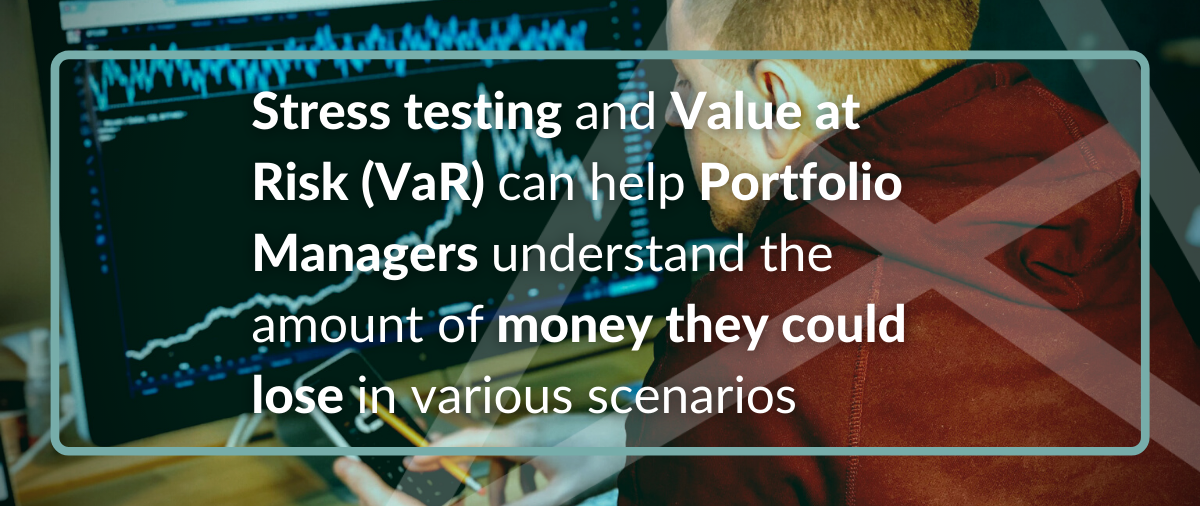No investor, retail or institutional, can hope to succeed without taking risk. More importantly, investors must understand and manage the risk they assume. Typically, we discuss risk as it is manifested in the middle- and back office. But risk management in the front office is every bit as critical, particularly since taking risk is how investment managers and brokers make money.
While market risk is the principal concern for traders, liquidity risk is not far behind
Every trader faces the risk that their position may fail to achieve the hoped-for outcome. They could realize a lower profit on the trade or lose money on the trade – potentially a significant or even catastrophic amount of money depending on the magnitude of the risk exposure. In addition, losses can hurt margin and trigger a margin call if the account value falls below a specified limit. In the worst case, the margin call could expose the trader to liquidity risk – the possibility that they might be forced to sell an asset or assets at a lower-than-desired price.
Understanding the magnitude of risk exposure and the impact of market events influences investment decision making
Portfolio managers depend on certain core quantitative processes to understand the magnitude of risk exposure and the losses they could experience under specific market conditions. For example, a Portfolio Manager is likely to want to know how a portfolio will behave under a black swan event, like the COVID-19 pandemic. Perhaps they wish to model how changes in interest rates, foreign exchanges rates, index rates, or price time series will affect a portfolio’s value. In the end, the effect on the portfolio all depends on the composition of the portfolio. Whatever the case, the quantitative methodologies they use, stress testing and/or Value at Risk (VaR) can help Portfolio Managers understand the amount of money they could lose in various scenarios. Depending upon how likely they expect these scenarios are to occur, together with the level of risk exposure, they can use the analytical results to inform their investment decisions.
VaR, Stress Testing, and Margin Prediction can help mitigate market risk
- Value at Risk makes it possible to effectively monitor market risk and ensure that investment strategies fall within the mandated risk profile, which applies to the portfolio manager or the trader.
- Stress Testing assesses the extent to which a portfolio (or individual investment) will respond to adverse market conditions. Stress testing can be conducted on a historical basis, which uses assumptions that a past crisis will reoccur. Alternatively, portfolio managers can create custom scenarios that incorporate current views on the market, reflect portfolio-specific characteristics, and inform investment decisions based on existing conditions.
- Margin Validation not only helps firms verify that broker margin requirements are correct but it can help traders anticipate how new positions or theoretical market events will raise or lower
margin requirements.
How much money and time do you want to spend on quantitative solutions?
Firms vary in the way they approach quantitative solutions. Moreover, firms vary in the level of integration of analytical tools firmwide. Surprisingly, there are firms with bold-faced names that continue to rely on Excel and macros to conduct analyses. Relying on Excel or even building a more sophisticated in-house system comes with several disadvantages. One of the most disagreeable is the cost of hardware, maintenance, and the IT professionals necessary to manage the system. Excel-based methods can often rely on only a few professionals, leading to key-man risk. And a firm that builds a VaR engine must pay for regular market data to support VaR and historically based stress testing. Of course, in-house systems demand a continuing need for reinvestment as well.
Cost-Effective Software Solutions Can Benefit the Front Office as well as the Back
Theorem’s Software-as-a-Service solution not only adds value to the back office but its analytical engines can be leveraged by portfolio managers and traders as well. Our out-of-the-box solution, complete with the necessary data feeds, comes at significant savings to in-house solutions. The ability to add enhanced quantitative analysis capabilities across the firm is a significant advantage in choosing Theorem as a vendor. Please get in touch to learn more about how Theorem can add value for you.
___
About the Author
Rebecca Baldridge, CFA, is an investment professional and financial writer with more than 20 years of experience in creating content and research for asset managers, investment banks, brokers and other financial services clients. She’s worked for some of the biggest names in the industry, including Merrill Lynch Asset Management, JP Morgan Asset Management, BNY Mellon and Franklin Templeton. Rebecca also spent 9 years as an analyst and director of equity research in Moscow, working for several Russian banks. In late 2019, she founded Quartet Communications, a boutique communications firm serving financial services clients. Her writing has been published in outlets including Pensions & Investments, MSNBC.com, Inc. magazine, and Investopedia.com. She holds a B.A. in Russian from Purdue University and an M.S. in Finance from the Krannert Graduate School of Management at Purdue.
